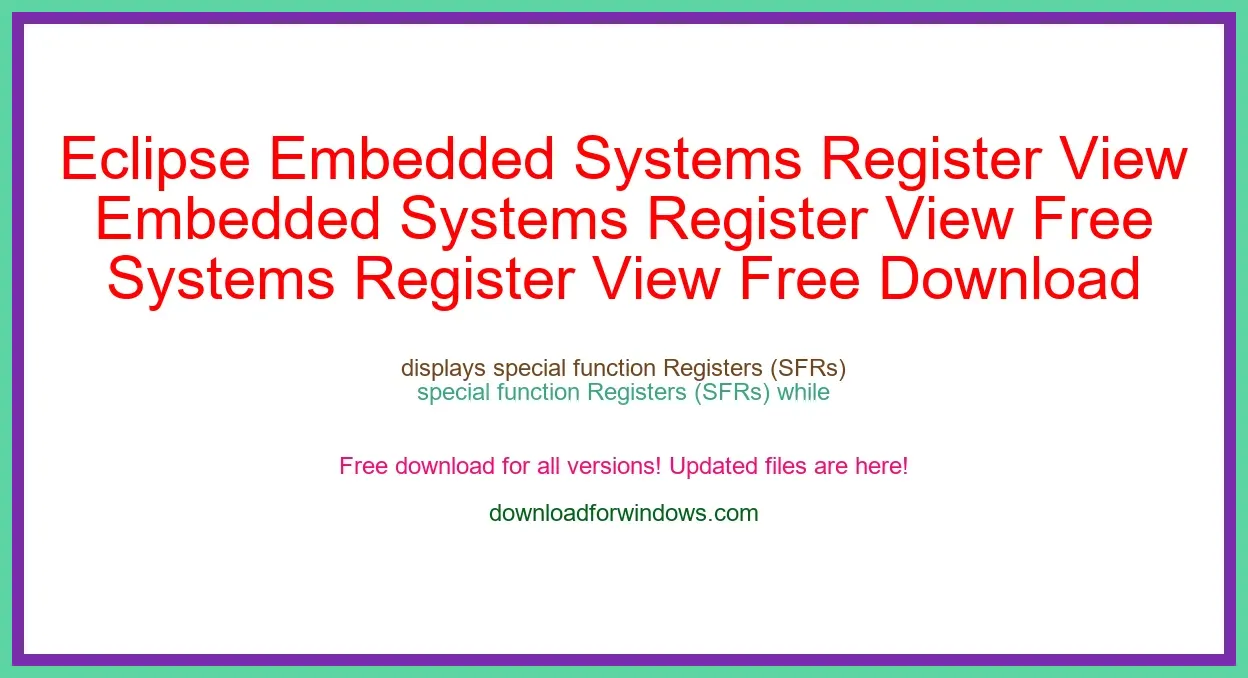Eclipse Embedded Systems Register View Free Download for Windows & Mac
displays special function Registers (SFRs) while debugging - Eclipse Embedded Systems Register View

Published Date: 2024-04-11
Eclipse Embedded Systems Register View Free Download
Eclipse Embedded Systems Register View is a free and open-source tool that allows users to view and edit register values for embedded systems running on Windows or Mac computers. It is available as a plugin for the Eclipse IDE, and it provides a convenient and intuitive interface for interacting with embedded system registers. The tool supports a variety of embedded system architectures, including ARM, x86, and MIPS, and it can be used to debug and analyze embedded system code quickly and easily.
Eclipse Embedded Systems Register View allows users to view and edit register values in both hexadecimal and decimal formats, and it provides a variety of features to make it easy to find and modify specific registers. The tool also includes a built-in help system that provides detailed information on the features and functionality of the tool. Eclipse Embedded Systems Register View is a valuable tool for anyone who works with embedded systems, and it is available for free download from the Eclipse website.
Eclipse Embedded Systems Register View : EMBedded SYStems REGister VIEW is an Eclipse Plugin which is designed for monitoring and modifying memory values of embedded devices. Therefore it offers a structured display of the special functions registers (SFR). While debugging, the register values are presented in the Hexadecimal (HEX) and Binary (Bin) column of the view. Modifications of peripheral registers values are possible via Editing in the Binary column via BitButtons, Editing in the Hex column, Choosing an interpretation from an ComboBox in the Hex column The EmbSysRegView works with any 32 bit target that stores data in little endian byte order and maps its register into memory adress space. In other words, if you find your registers in the CDT Memory View, the RegisterView will also work with that device assumin that a chip xml description is available.
_Download_Full_____UPDATE.webp)
_Download_Full_____UPDATE.webp)
_Download_Full_____UPDATE.webp)
_Download_Full_____UPDATE.webp)
_Download_Full_____UPDATE.webp)
_Download_Full_____UPDATE.webp)
_Download_Full_____UPDATE.webp)
_Download_Full_____UPDATE.webp)
_Download_Full_____UPDATE.webp)
_Download_Full_____UPDATE.webp)